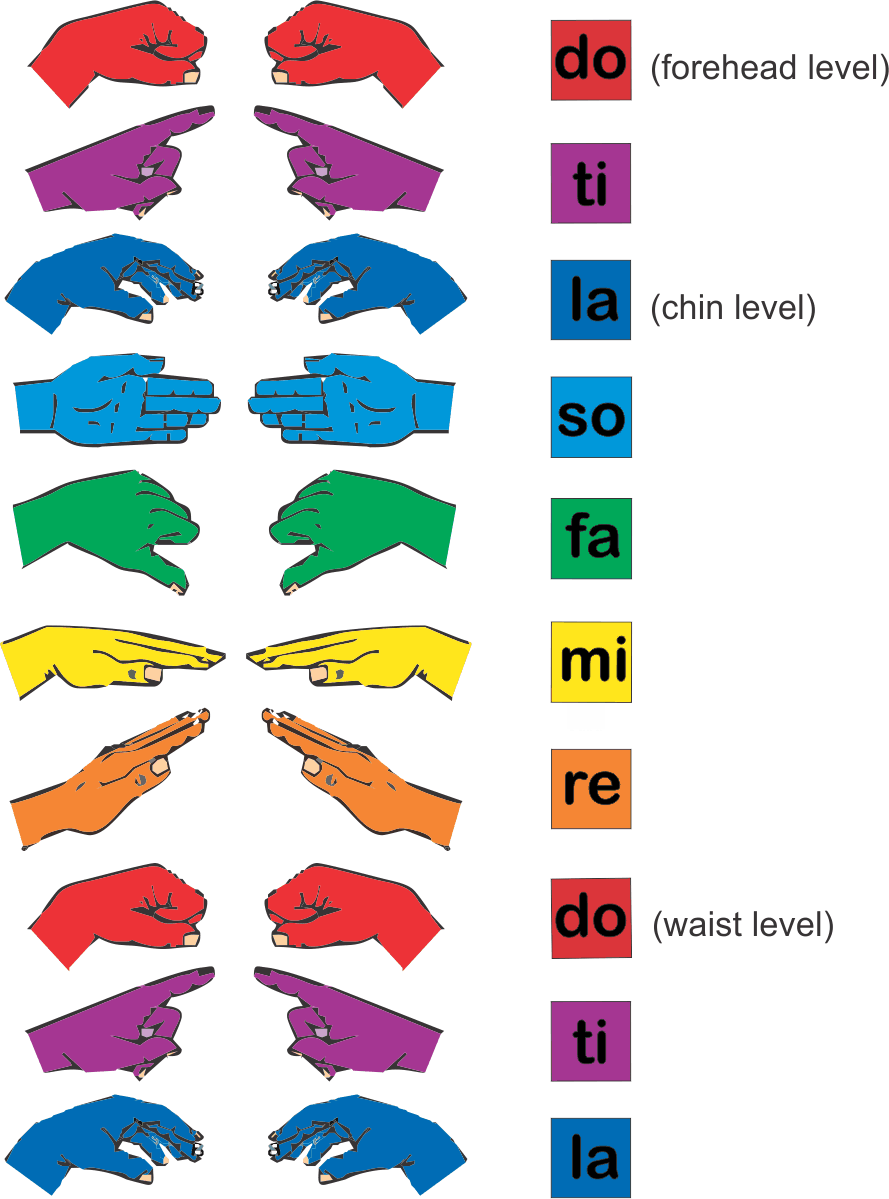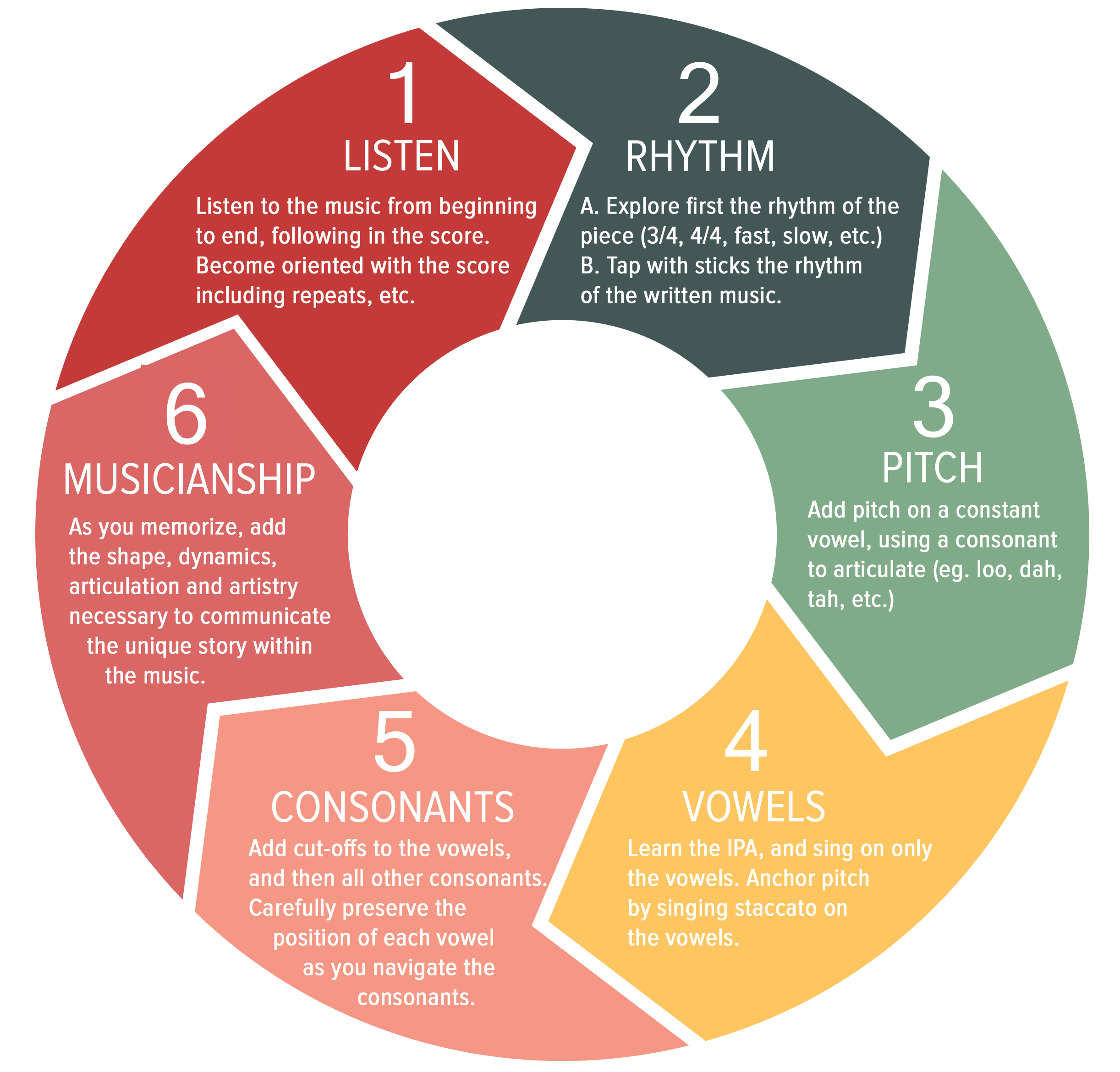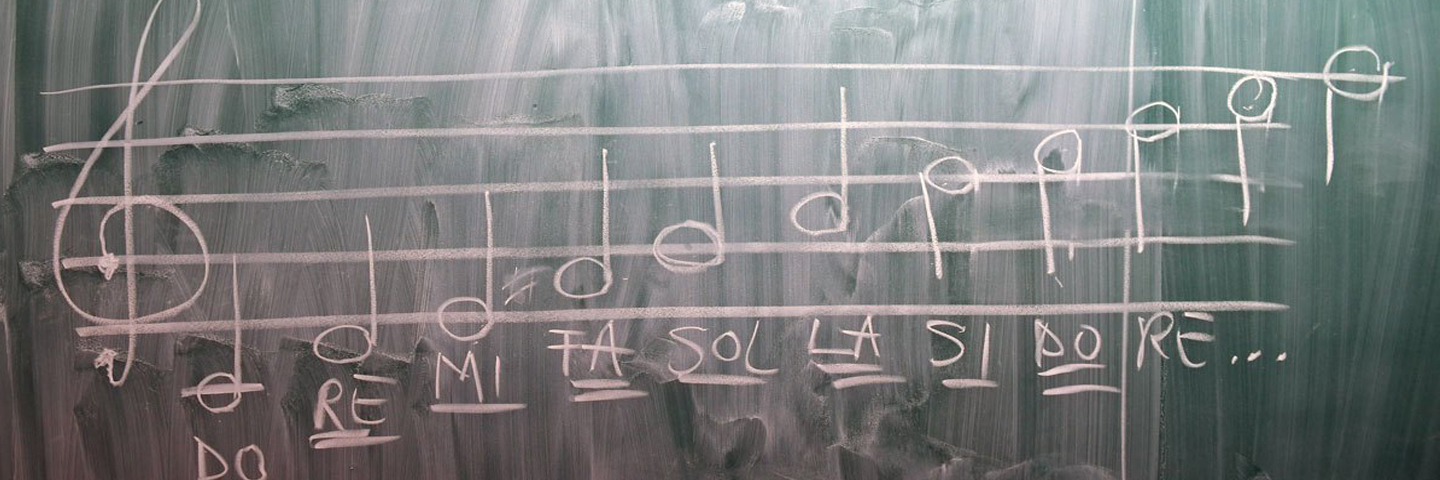Hello all UCC Choristers!
It was great to see and hear everybody last week!

The solfege system as we know it dates all the way back to the 1800’s. One of the most popular and well-known music teaching methodologies is the Kodaly Method, developed in the mid-twentieth century by Hungarian composer and music teacher Zoltan Kodaly. The Kodaly Method was primarily designed to make music education in Hungary’s elementary schools more effective and fun.
Kodaly borrowed many of his ideas about teaching music from others, including John Curwen who gave Kodaly his ideas about solfege. Curwen added one fantastic tool to the Kodaly system: the solfege hand signs.
Do – Make a fist with your palm facing down.
Re – Straighten your fingers (keeping them together), and bring your hand up to make a 45-degree angle with the ground.
Mi – Keep the same hand shape, but move your hand so that it is parallel with the ground.
Fa – Making a loose fist with four fingers (palm facing downward), extend your thumb and point it downward, almost perpendicular with the rest of the hand.
Sol – Straighten the fingers so that the hand has the same shape as in mi, but tilt it so that your palm is directly facing you.
La – Curve the hand gently, with the palm and fingertips facing the floor.
Ti – Make a loose fist, but point the index finger upward at about a 45-degree angle with the ceiling.
…and back to Do!
In class this week we’ll examine why each note’s solfege hand sign looks the way it does. The easiest way to learn them is to just practice! Start with simple up-and-down scales (do to do) and three-note arpeggios (do-mi-sol-mi-do).
Watch the video below of some UCC choristers using the solfege hand signs set to the famous solfege “Do, a Deer” from “The Sound of Music” (see if you can spot current high school members as much younger versions of themselves!!). We’ve also added a couple of new videos of “Walking in the Air” – some really interesting interpretations well worth the watch. We look forward to seeing you at rehearsal.
From Last Week:

This page will be updated each week. We will also create a videos page with archives of the weekly videos you find here, so you can always go back and re-do as required. Take a few minutes each week to review this page, anchoring our rehearsal this week and preparing for the next time we meet.
This week we introduced our rehearsal wheel, which is pictured on the left. Music is primarily an auditory art, and in this age of visual learning the importance of listening is often ignored. Step 1 on our rehearsal wheel reminds us to listen. Listen with intent. Focus on the sound – quality of vowels, variance of rhythm, solidarity of pitch, etc. These are 3 of the songs we will be working on next week and beyond. Come prepared next week to notice and discuss how our sound is different, and how it is the same. Have fun, and we look forward to working on these with you next week.


